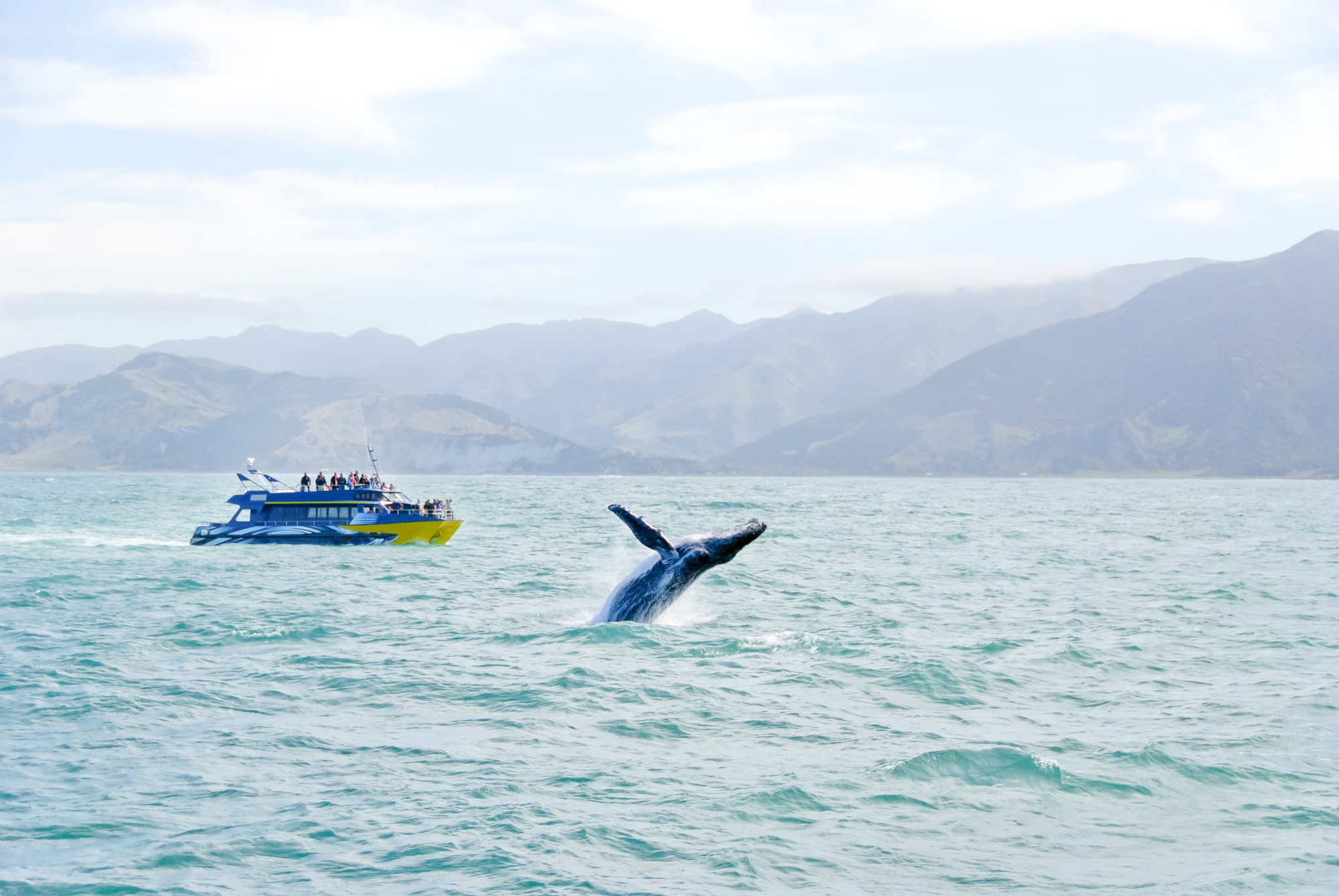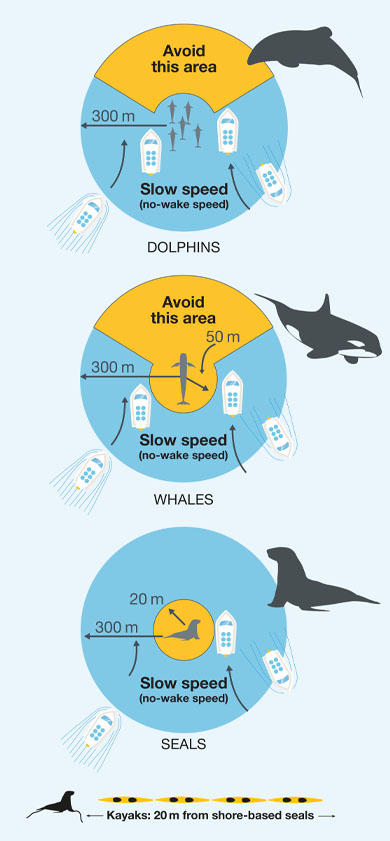Whale Watching Regulations in Kaikoura
Embarking on a whale watching tour in Kaikoura is not just about marveling at these magnificent marine creatures; it’s also a commitment to responsible and ethical practices. Guided by the International Whaling Commission (IWC) and the DOC, Kaikoura’s tour operators adhere to a set of guidelines ensuring the well-being and conservation of the whales and other marine wildlife.
Let’s delve into these crucial guidelines that shape the ethical whale watching experience in Kaikoura and extend to the diverse array of marine species that call these pristine waters home.
Are you planning your trip to Kaikoura last minute?
If you’re booking your trip to Kaikoura last minute, I have you covered. Below are some of the top tours, accommodations, and more!
🐳 Best whale tours and activities in Kaikoura:
- Whale Watch Kaikoura (Most popular eco-tour in Kaikoura!)
- Wings over Whales (Eco-certified whale tours by plane)
- Kayak with Seals and Dolphins (Up-close and personal experience)
🚍 If you’re staying in Christchurch, why not join our day trip whale tour in Kaikoura? It includes transport for a convenient and unforgettable experience!
Regulations of Whale Watching in New Zealand
Efforts to safeguard the welfare of marine mammals, comprehensive regulations and guidelines have been established under the Marine Mammals Protection Act 1978. These measures extend to all whale and dolphin species, providing a framework for their conservation and the management of human interactions in their habitats.
The Marine Mammals Protection Regulations 1992, amended in 2008, form the cornerstone of this protective regime, delineating the procedures for permitting commercial tour operators. Moreover, local jurisdictions have implemented specific guidelines and Codes of Conduct, tailored to the unique ecosystems and species found in certain areas.

Keep the right distance is important for the welfare of the animals.
Kaikoura guidelines explained
These guidelines include:
- Maintaining a safe distance from the whales: Tour operators must keep a minimum distance of 50 meters from the whales, to prevent disturbing their natural behaviors. Stay at least 200 meters away from any baleen or sperm whale mother with a calf.
- Do not swim with whales: It is not allowed to swim with the whales. It is allowed to swim with dolphins, but rules apply.
- Avoiding sudden movements or loud noises: Tour operators must avoid making sudden movements or loud noises that could startle the whales.
- Avoiding interference with feeding or breeding: Tour operators must not interfere with the whales’ feeding or breeding behaviors.
- Respecting the whales’ right to privacy: Tour operators must not follow the whales for extended periods of time, or approach them when they are resting or socializing.
- Using appropriate vessel sizes and speeds: Tour operators must use vessels that are appropriate for the size and behavior of the whales, and must operate at speeds that do not disturb the whales.

What about other marine wildlife species?
Dolphins
- Gradually increase speed to outdistance dolphins.
- Do not exceed 10 knots until more than 300 meters away.
- Do not swim with dolphin pods containing juveniles (half the size or smaller of an adult). Otherwise, supervised swimming is allowed.
Seals (in the water)
- Vessels need to stay at least 20 meters away from the water’s edge where seals may be present.
- Swimmers need to stay at least 5 meters away from the water’s edge.
Seals (onshore)
- Give seals space by staying at least 20 meters away if possible.
- Avoid coming between fur seals and the sea.
- Keep dogs on a leash and well away.
- Do not drive vehicles closer than 50 meters of a marine mammal if possible.
- Never attempt to touch seals – they can be aggressive and can carry diseases.
For more information on the code of conduct for whale watching in Kaikoura, you can refer to the IWC’s Handbook on Whale Watching, which is available online or check the DOC website.
